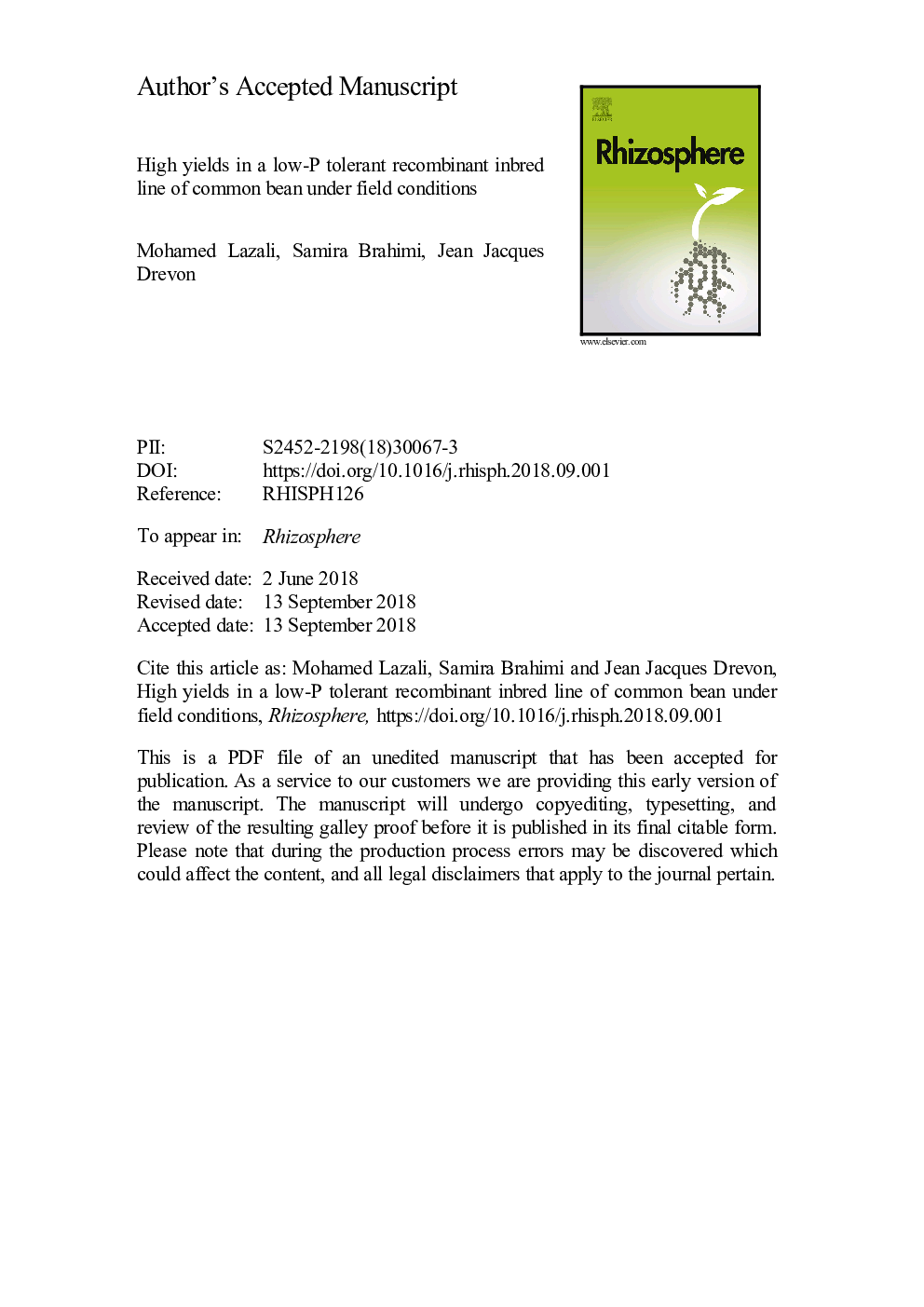| Article ID | Journal | Published Year | Pages | File Type |
|---|---|---|---|---|
| 11031746 | Rhizosphere | 2018 | 23 Pages |
Abstract
Low phosphorus (P) availability is a primary factor that limits the production of common bean (Phaseolus vulgaris L.) in many parts of the world, especially when plant growth depends on N2 fixation. In order to understand how common bean copes with this nutritional constraint, two recombinant inbred lines (RILs) of common bean namely RILs 115 and 147 were studied in the field conditions during three growing seasons from 2012 to 2014. At flowering stage, plants were harvested and analyzed for their nodulation, growth, P content and yield. Results showed that for RIL115, the nodulation (43%), shoot (28%) and root growth (32%) was higher than for RIL147 in a low-P availability soil whatever the growing season. In addition, RIL115 had better growth and efficiency in use of P for the rhizobial symbiosis (7.29â¯mg nodule dry weight mgâ1 nodule P) about twice higher may be involved in tolerance to low-P, and to be a useful marker for field data. At harvest, the RIL115 showed higher grain yield (1146â¯kgâ¯haâ1) than the RIL147 (1045â¯kgâ¯haâ1). It is concluded that the genotype of RIL 115 had a higher yield and could best adapt to low-P availability under field condition.
Keywords
Related Topics
Life Sciences
Agricultural and Biological Sciences
Agronomy and Crop Science
Authors
Mohamed Lazali, Samira Brahimi, Jean Jacques Drevon,
